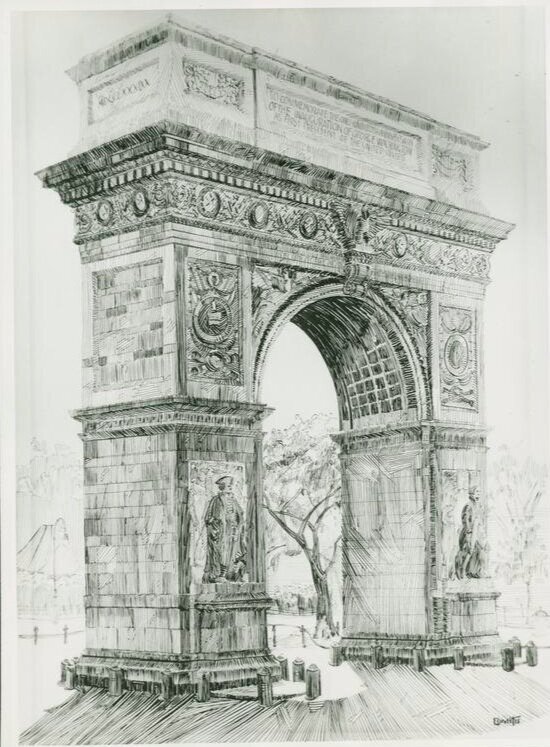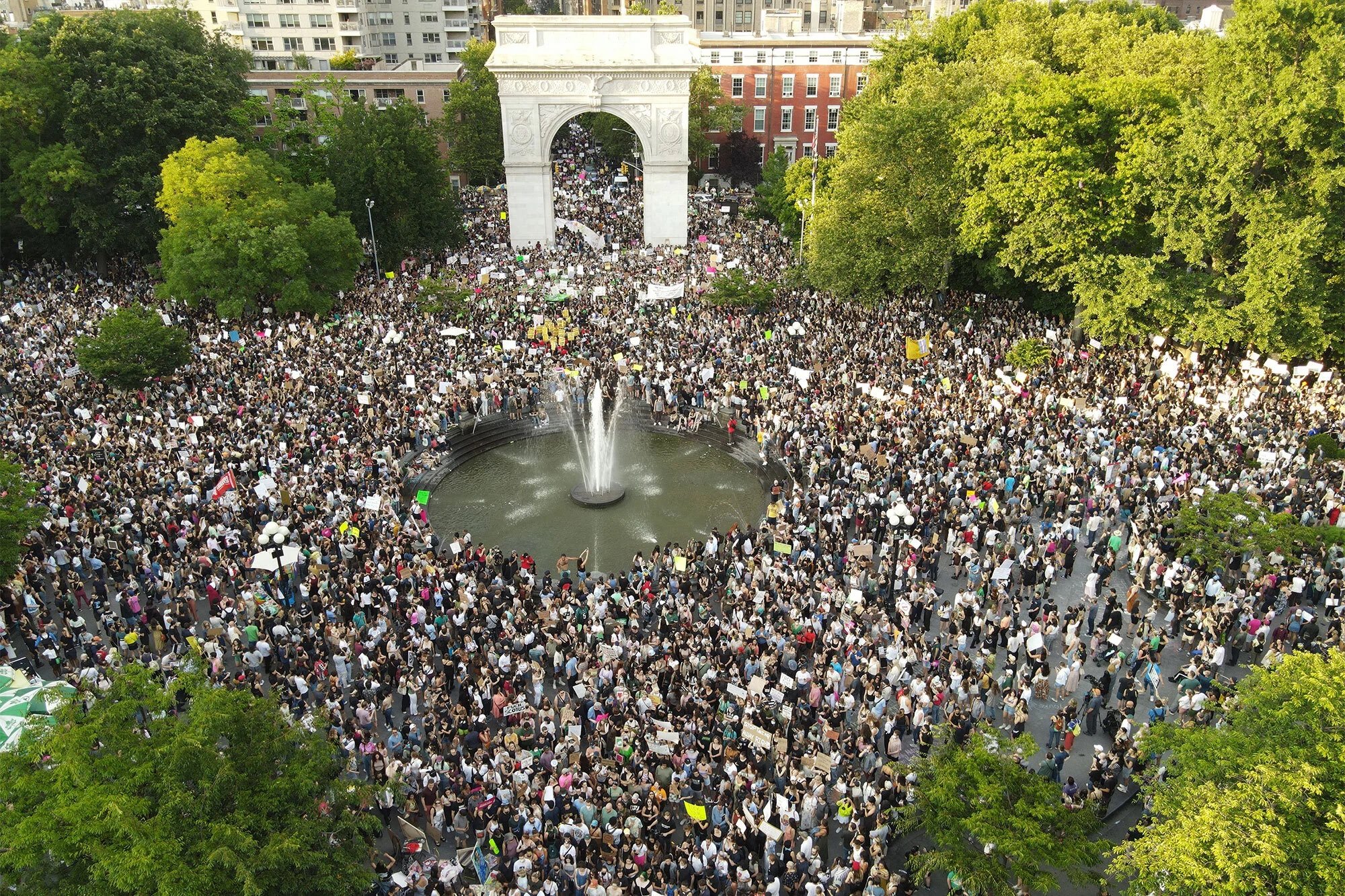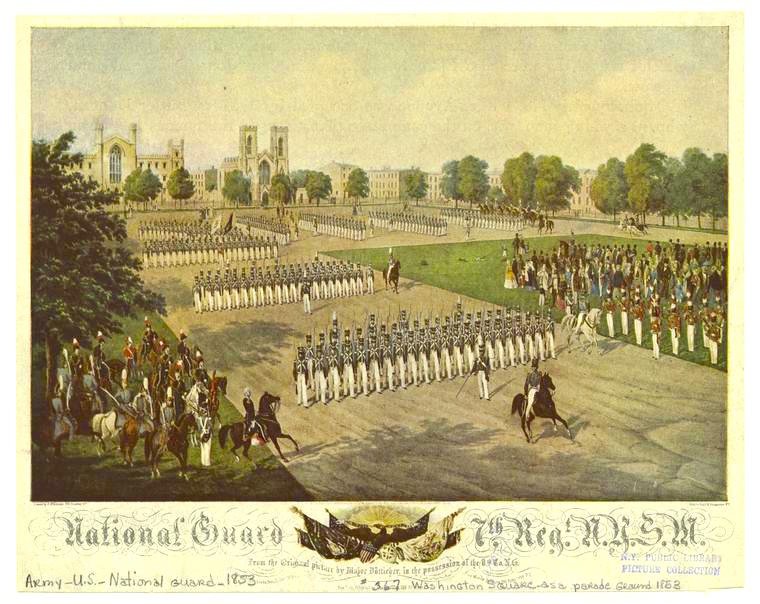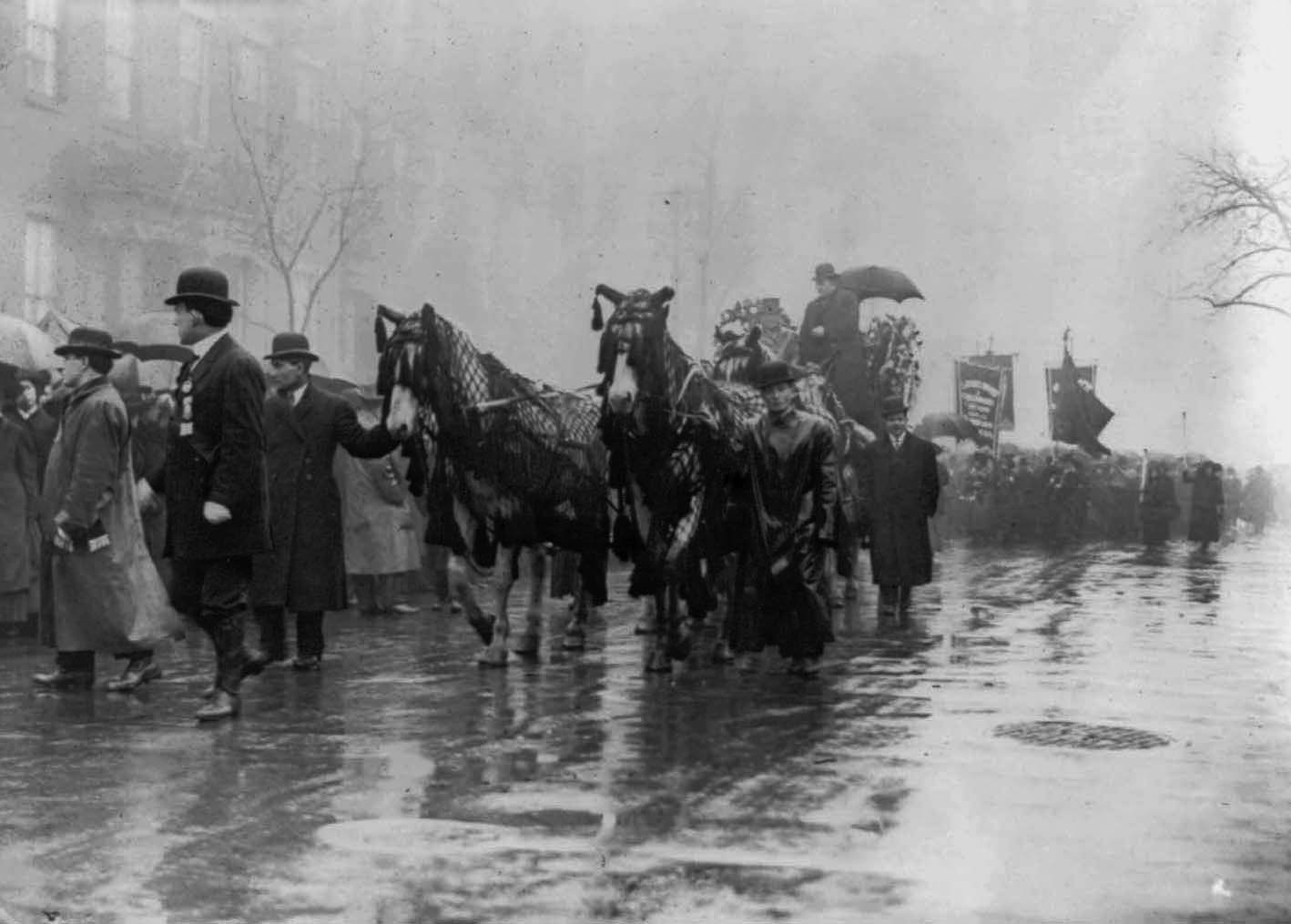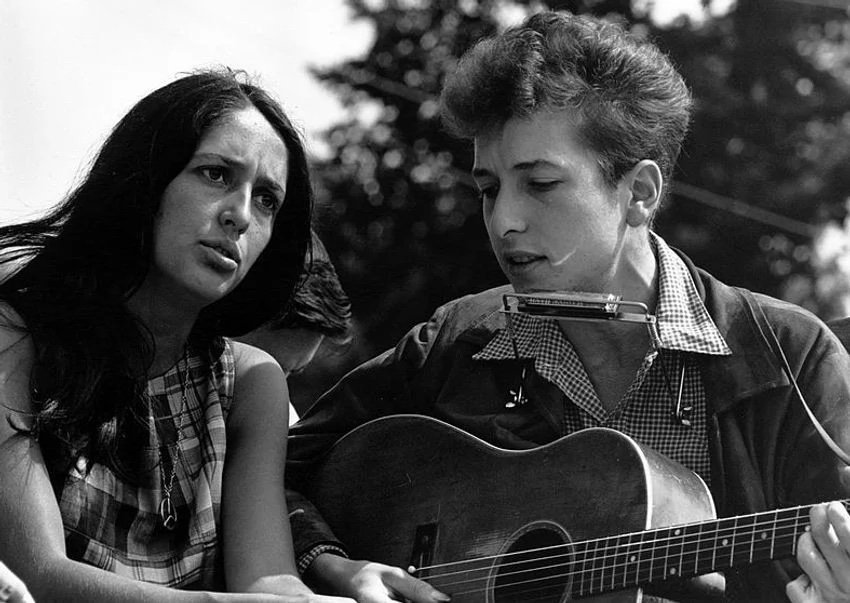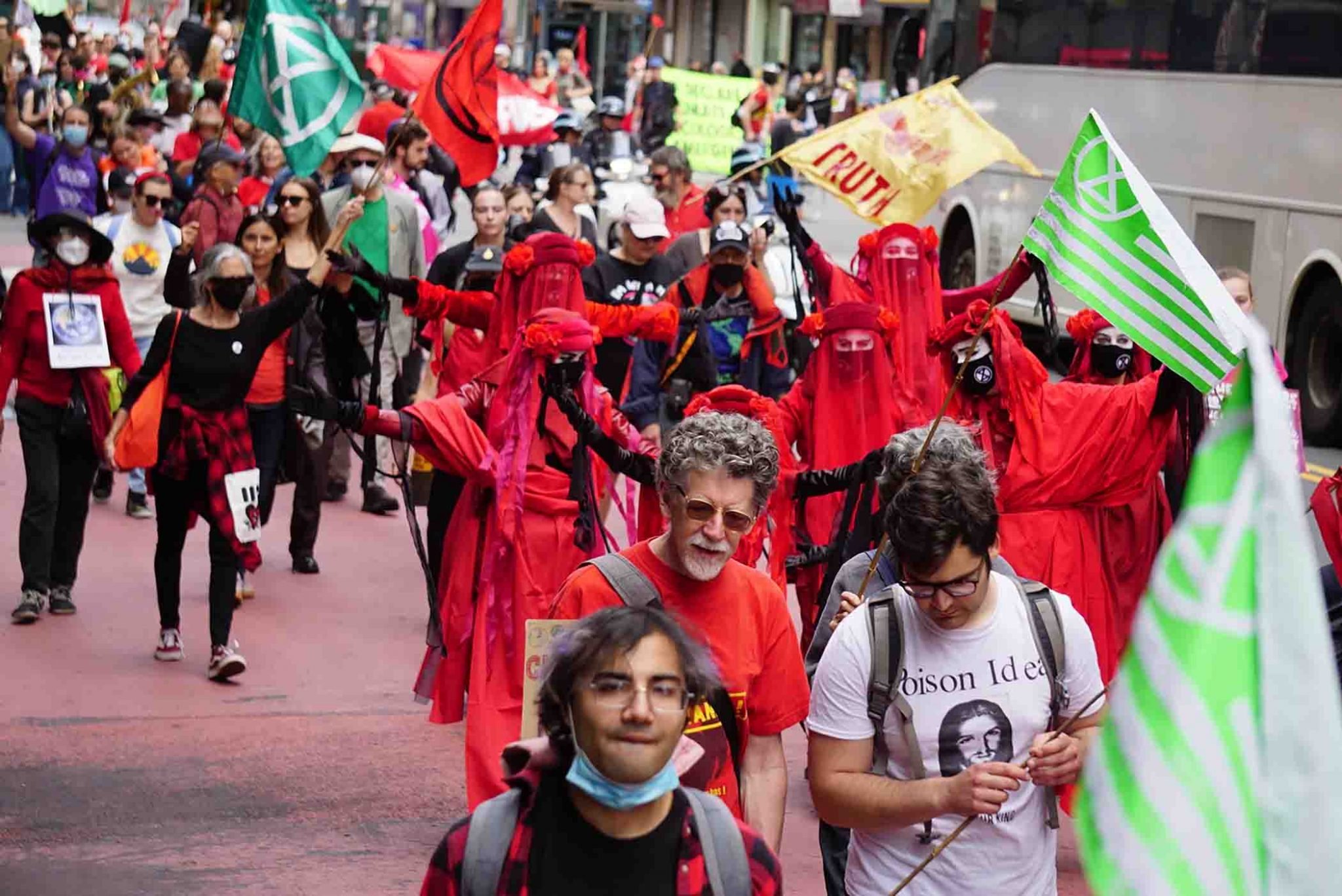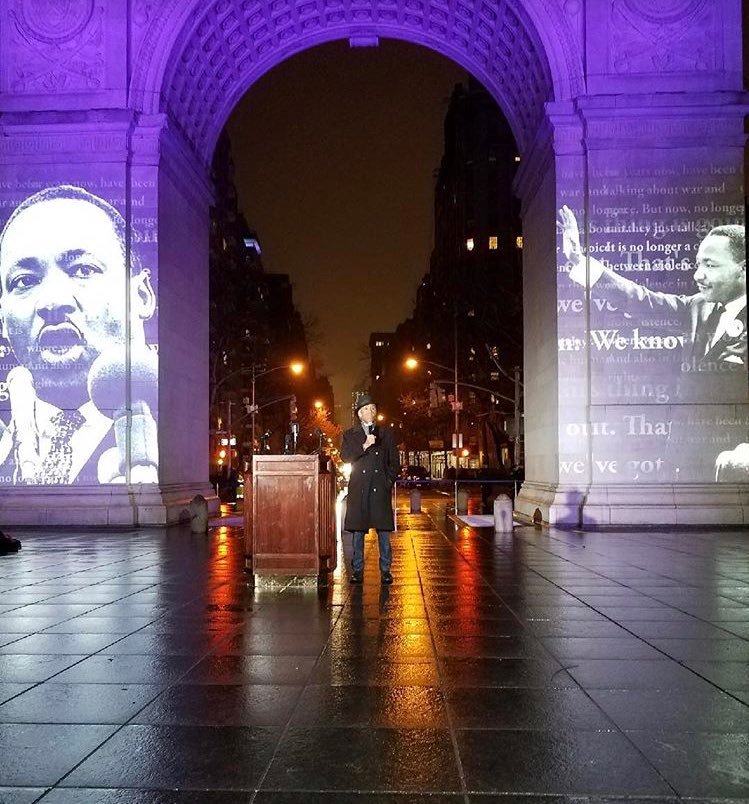NYC’s Vocal Point - The Fascinating History Of Political Activism In Washington Square Park
Crowds gather in Washington Square Park to protest the overturning of Roe v. Wade. Source NY Post.
Washington Square Park, located in the heart of Greenwich Village in Manhattan, has long been a site of political activism and social justice in New York City. The park's history as a center for protest and dissent dates back over a century, and its legacy as a hub of political expression and mobilization continues to this day. From the labor struggles of the early 20th century to the Black Lives Matter movement of today, Washington Square Park has played a vital role in many of the most significant social movements in the city's history.
We at the Washington Square Association celebrate the role that the park continues to play in free expression and as a catalyst for the types of political activism that has shaped our global history. As you walk through the park, appreciate how wonderful it is to see the continued history of rising voices, whether you agree with them or not. To have a front row seat to the most important conversations of our generation and to witness history in the making is a privilege.
Let’s take a look at Washington Square Park’s fascinating history of political activism at the root of many of the most important political movements of our time.
19th Century - The Indentured Labor And Abolitionist Movements
Washington Square Park has always been political. It was used first as the Washington Military Parade Ground in 1826, and the site became a public park in 1827. Before that, Washington Square Park had been the site of the last public execution of a slave a woman, Rose Butler, who was convicted of arson in 1819, despite slaves being freed in New York in 1817. Protests erupted, galvanizing the abolitionist movement that continued for decades. For example, in 1834, a group of women led by the abolitionist and women's rights activist Lydia Maria Child held a public meeting in the park to protest the sale of a slave girl in New York City.
The National Guard Summoned to squash The Stonecutter’s Rio in 1834. Source: Ephemeral New York
Also in 1834, New York University decided to use cheap prison labor from Sing Sing to dress the stone for a new building. Angry professional stonecutters held a rally in Washington Square Park, and then held the first labor march in New York City. That turned into The Stonecutter’s Riot, and the 27th New York regiment was summoned and camped in Washington Square for four days and nights.
Illustration of the Draft Riots. Source: Wikipedia
Public Domain, https://commons.wikimedia.org/w/index.php?curid=6762837
During the Civil War, protestors gathered in the draft riots of 1863, the bloodiest urban conflict in American history. Due to the nature of draft politics, the draft riots quickly became race riots with 120 people being killed and several public buildings being burned to the ground. Troops summoned from Gettysburg camped out in Washington Square to ensure peace in the vicinity.
Source: Tenement Museum
Early 20th Century - Labor Activism And Women’s Rights
In the early 20th century, Washington Square Park was the site of intense labor struggles, as workers fought for better wages and working conditions. In 1908, the socialist leader Eugene Debs held a rally in Washington Square Park in support of his presidential campaign. Debs was a vocal critic of capitalism and championed workers' rights, and his campaign focused on issues such as the eight-hour workday and the abolition of child labor.
Procession in honor of the victims of the The Triangle Shirtwaist Fire. Source: Wikipedia, By Bain News Service photograph / George Grantham Bain Collection (Library of Congress).
On March 25, 1911, a disastrous and deadly fire at the Triangle Shirtwaist Factory one block east of the park claimed 146 lives, mostly young immigrant women. A week later, thousands of mourners passed through Washington Square Park, in procession and in protest to draw attention to the dangerous and oppressive working conditions that led to the tragedy and were all too common in New York City.
Procession of The Triangle Shirtwaist Fire of 1911. Source: Greenwich Village Society For Historic Preservation
In the 1912 Labor Day parade, 20,000 workers marched down Fifth Avenue and through the Washington Square Arch to demand improved working conditions in one of the largest labor protests of its time.
Women’s Suffrage Parade, PR 068, New-York Historical Society Library
On October 23rd, 1915, 25,000 women marched up Fifth Ave starting at the park to advocate for women’s suffrage, in the largest parade until that time. Just 2 years later in 1917, New York State was one of the first to grant women the right to vote.
One of the most significant labor events in the park's history was the 1912 Lawrence Textile strike, which was sparked by poor working conditions and low pay for immigrant textile workers in Lawrence, Massachusetts. The strike quickly spread to other cities, including New York, and in February 1912, thousands of workers and their supporters gathered in Washington Square Park. The rally, which was organized by the Industrial Workers of the World (IWW), was met with police violence, and dozens of protesters were arrested and beaten. The rally galvanized support for the strikers and helped to bring about significant improvements in working conditions and pay.
Margaret Sanger leads a parade protesting unfair child labor exploitation - Library of Congress
Garment workers, Webster Hall, ca. 1915-1920. By Bain News Service. Library of Congress
Margaret Sanger led a march of 119 child refugees of the Lawrence Textile strike, raising awareness on the effect of these conditions on children in poverty. The march concluded at Webster Hall, where New Yorkers had set up a banquet to feed the malnourished children.
During the Great Depression, the park was a gathering place for the unemployed, who organized rallies and demonstrations to demand relief from the government. In 1932, a group of unemployed men marched to the park to demand relief from the government. The protest, which became known as the "Hunger March," drew thousands of people and marked a turning point in the struggle for workers' rights and social justice.
1910s - Protesting World War I
One of the earliest and most significant anti-war protests in Washington Square Park took place in April 1915, when a group of more than 2,000 pacifists and anti-war activists gathered in the park to denounce the conflict and call for peace. The demonstration was organized by a group called the Emergency Peace Federation, which had been formed in response to the outbreak of World War I in Europe.
Counter-demonstrators and police officers clashed with the protesters, leading to several injuries and arrests. Nevertheless, the protest in Washington Square Park marked an important early moment in the history of anti-war activism in the United States, and a sign of the growing public opposition to the conflict.
“Arch Conspirators” Etching by John Sloan, 1917 Metropolitan Museum of Art
On January 23, 1917, 6 artists, including John Sloan, Marcel Duchamp, and Gertrude Drick, snuck through the Washington Square Arch door and once atop the Arch, proclaimed their declaration for “The Free and Independent Republic of Washington Square.” The bohemians came armed with food, plenty of liquor, hot water bottles for warmth, Chinese lanterns, red balloons, toy pistols, and of course, the Declaration of Independence of the Greenwich Republic, thought to have been written by Duchamp.
Source: Deleware Art Museum
1930s and 1940s - Protesting Fascism And World War II
Source: New York Daily Photo
In 1933, Fiorello La Guardia, who would later become the mayor of New York City, held a 100,000 person rally in Washington Square Park to denounce the rise of fascism in Europe. La Guardia was a vocal opponent of fascism and Nazism, and his rally was part of a broader campaign to raise awareness about the dangers of totalitarianism. Of course, LaGuardia’s famous statue sites just 1 block south of the park.
In the 1940s, the park was also a site of anti-fascist and anti World War II protests. Many of the activists who organized and participated in these protests were members of the Communist Party, which had a strong presence in the city during this time.
1950s and 1960s - The Beat Generation And Civil Rights Movement
The Beatnik Riot. Source: Greenwich Village Society For Historic Preservation
Allen Ginsburg protests decency laws by reading censored poetry to crowds in 1966. Source: The Culture Trip
In the 1950s and 1960s, Washington Square Park became a center for Beat Generation culture and countercultural activity. Writers and artists, including Jack Kerouac, Allen Ginsberg, and William S. Burroughs, frequented the park, and it became a symbol of the bohemian lifestyle that characterized the Beat movement. The park also played a role in the civil rights movement, as activists organized sit-ins and rallies to protest segregation and discrimination in the city.
One of the most significant events in the park's history as a center for civil rights activism was the 1961 Washington Square Park Folk Festival, which brought together musicians, poets, and activists to celebrate folk culture and promote racial and social justice. Folk singer Pete Seeger performed at the Washington Square Park Folk Festival, and he spoke about the importance of the park as a site of political expression and mobilization. "There are a lot of people who are troubled and worried and angry about what's happening in the world," Seeger said. "And they need a place to come and express themselves. Washington Square is one of those places."
3,000 “Beatniks,” including Bob Dylan, gathered and were attacked by police with billy clubs and the mounted police unit, which had previously been instructed to ban activities interfering with the tranquil and quiet of the park. Eventually, the ban was lifted after more protests and a 1,500 petition was signed, following what was dubbed the Beatnik Riot, which was also captured in the extraordinary documentary film Sunday by Dan Drasin. The Beatnik Riot has many parallels to some of the unlawful behavior in the park that we’ve documented during Covid and NYPD’s forceful attempts to curtail it.
1960s - The Anti War Movement
Vietnam Protest March From Washington Square Park to Bryant Park. Source: Culture Trip
Washington Square Park became a center for anti-war protests and countercultural activity. The Vietnam War was a major issue of the time, and the park was a site of frequent protests and rallies against the war. In May 1970, following the shootings at Kent State University, Departments of NYU cancelled its classes and thousands of protesters gathered in the park to denounce the war in Vietnam and demand an end to the draft. The protest turned violent when police clashed with demonstrators, leading to numerous arrests and injuries.
Joan Baez and Bob Dylan play in Washington Square Park. Source: Village Preservation
In May 1970, Bob Dylan and Joan Baez performed a free concert in Washington Square Park to protest the Vietnam War and to support the ongoing student strike at Kent State University. The concert drew a large crowd and was marked by a sense of political and social urgency, as well as the powerful voices of two of the most iconic folk musicians of their generation.
In 1970, a group of activists climbed to the top of the Washington Square Arch and declared it the "Free Arch Republic." The group was led by Yippie activist Aron Kay, who was also known as the "Yippie Pie Man" for his habit of throwing pies at politicians and public figures. The "Free Arch Republic" was meant to be a satirical protest against the Vietnam War and the Nixon administration, which many activists believed were trampling on the civil liberties and democratic rights of Americans.
Kay and his fellow activists hoisted a black flag with a white peace symbol on top of the arch and declared the "Free Arch Republic" independent from the United States. They also distributed leaflets and made speeches denouncing the war and calling for a revolution to overthrow the government.
Eventually, the police intervened and arrested the activists for disorderly conduct and defacing public property. Kay and several others were convicted and fined, but the "Free Arch Republic" protest became a legendary moment in the history of political activism in Washington Square Park. The protest highlighted the radicalism and irreverence of the Yippies, who sought to use humor and satire as a means of subverting the dominant political culture and challenging the status quo. It also underscored the importance of public spaces like Washington Square Park as sites of political expression and resistance.
1970s, 1980s and 1990s - The Gay Rights And Anti-Hate Crime Movements
Bette Midler performing at the Arch at the Gay Liberation March in 1973. Photo courtesy of the New York Times. Source: Washington Square Park Conservancy
In the decades that followed, Washington Square Park continued to be a site of political mobilization and activism. In 1970, the feminist icon Bella Abzug held a rally in Washington Square Park to commemorate the first anniversary of the Stonewall riots, which had sparked the modern LGBTQ rights movement. Abzug was a champion of women's rights and LGBTQ rights, and her rally helped to raise awareness about the struggles faced by these communities. In 1973, it had become the Gay Pride Parade, with a march from Central Park West to Washington Square Park, featuring performers that included Bette Midler and Barry Manilow.
In the 1980s and 1990s, the park was a gathering place for AIDS activists, who organized rallies and protests to demand government action on the epidemic.
In 1989, David Dinkins, who would later become the first Black mayor of New York City, held a rally in Washington Square Park to denounce the rise of racist attacks and hate crimes in the city. Dinkins's rally was part of a broader effort to address issues of race and inequality in New York, and his advocacy helped to pave the way for greater progress on these issues.
2000s Through 2010s - Anti-War And Inequity Protests
Occupy Wall Street marches were frequent between Zucotti Park and Washington Square. Source: Flickr
In the 2000s and 2010s, the park was a site of protests against the wars in Iraq and Afghanistan, as well as Occupy Wall Street. According to Mark Naison, a professor of African American Studies at Fordham University and a co-founder of the group, "The Occupy Movement drew heavily from the same cultural and social networks that produced the music, art, and political activism associated with Washington Square Park." Naison believes that Washington Square Park is unique in that it has always been a site of activism and radical thinking, and the spirit of resistance and social justice that is present there today has a long and deep history.
Bernie Sanders speaks to massiver crowds in Washington Square Park. Source: NYTimes
In 2016 and 2020, Senator Bernie Sanders held rallies in Washington Square Park as part of his campaigns for the Democratic presidential nomination. Sanders attracted large crowds of supporters to the park, where he spoke about his platform of progressive policies such as universal healthcare and free college education.
2010s-2020s - The Green Movement And Climate Activism
Climate activists march from Washingotn Square to Madison Square Park. Source: Village Voice
In 2018, Alexandria Ocasio-Cortez, who would later be elected to Congress to represent the Bronx, held a rally in Washington Square Park to rally support for her insurgent campaign for the Democratic nomination for New York's 14th congressional district. Ocasio-Cortez, a democratic socialist, was running on a platform of progressive policies such as Medicare for All and a Green New Deal. In June 2022, she later returned to the park to protest the overturning of Roe v. Wade in 2022, where thousands rallied to demand access to reproductive health care.
Protesters fill the park in response to the overturning of Roe v. Wade. Source: Grazie Magazine
In 2019, the climate activist Greta Thunberg held a rally in Washington Square Park as part of her global campaign to raise awareness about the urgent need for action on climate change. Thunberg's rally drew thousands of supporters to the park, where she spoke about the devastating impact of climate change on the planet and the urgent need for action to address this crisis.
2010s and 2020s - Black Lives Matter
Source: Village Alliance
In New York City, Washington Square Park has been a key location for Black Lives Matter protests since the movement gained momentum in the wake of the police killings of Eric Garner and Michael Brown in 2014. Garner died after being put in a chokehold by a police officer on Staten Island, and Brown, another African American man, was shot and killed by a police officer in Ferguson, Missouri.
Following these incidents, activists in New York City organized a series of protests and demonstrations in Washington Square Park and other public spaces to demand accountability and reform from law enforcement and government officials. In 2014, a "Die-In" was held in the park, where protesters lay down on the ground for several minutes to symbolize the deaths of Garner and Brown and others at the hands of police. More than 25,000 people convened in Manhattan for Millions March NYC that December, starting at Washington Square Park and marching towards 34th Street..
Source: Village Alliance
In the years that followed, Washington Square Park continued to be a site of Black Lives Matter protests and demonstrations, including marches, rallies, and other forms of direct action. In 2020, following the killing of George Floyd by a police officer in Minneapolis, Minnesota, protests erupted across the country, including in New York City. Washington Square Park became a focal point of these protests, with thousands of people gathering in the park to demand justice and an end to police brutality.
Source: https://www.shutterstock.com/video/clip-1053867632-new-york---june-6-2020-washingtonShutterstock
In response, police and city officials have sought to restrict access to the park and limit the activities of protesters. However, despite these challenges, Black Lives Matter activists have continued to use Washington Square Park as a platform for their movement and as a symbol of their ongoing struggle for justice and equality.
Source: Twitter
At a rally in the park in 2018, civil rights activist and MSNBC host Al Sharpton spoke about the park's legacy of political activism and the ongoing struggle for racial justice. "Washington Square Park has always been a place where people come to fight for what's right," Sharpton said. "And we're here today to continue that fight, to demand justice and equality for all."
Washington Square Park Shaping Our Future
Protestors gather in the park to protest the overturning of Roe v. Wade. Source: NYPost
The legacy of political activism and protest in Washington Square Park is an important part of the city's history, and it continues to inspire and inform social justice movements today. As New York City and the world at large continue to grapple with issues of inequality and social justice, of violence and war, and of global threats like climate change, Washington Square Park remains a vital center for political expression and mobilization, and a symbol of the power of collective action in the face of systemic injustice.
According to GVSHP’s Director Andrew Berman, "Washington Square Park has been a site of political activism and social justice for more than a century. It has played a vital role in many of the most significant social movements in the city's history, from the labor struggles of the early 20th century to the anti-war protests of the 1960s and 70s to the Black Lives Matter movement of today. The park has always been a place where people come together to speak out and fight for what they believe in, and that spirit of resistance and solidarity is what makes it such an important part of the city's history."
And we all can have a role in shaping that history together.
